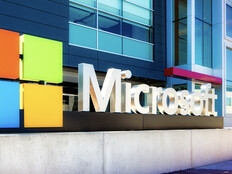How Remote Management Software Increases IT Operation Efficiency
When you're an IT staff of one managing nearly 200 computers across multiple locations, you'd better have a few tricks up your sleeve. Just ask Eric Forcey.
The IT manager for the city of Hanford, Calif., was preparing 27 computers for city workers when he fielded a call from a Public Works Department employee who had downloaded malware.
In the past, Forcey might have driven to that office and spent an hour or more cleaning up the infected machine. Instead, he launched a remote-management tool, logged on to the infected computer, and then launched his antimalware software. As security software scrubbed the machine, Forcey continued to prep the PCs in his office.
"Without the remote-access software it would have taken me 10 to 15 minutes driving each way, plus an hour waiting for the scan to finish," he says. "I probably would have gotten only two computers staged that day instead of four or five."
Remote-management software also makes it possible for him to keep a handle on IT operations from the road, he adds. Once when he was traveling on the California coast, Forcey received an urgent support call from the Hanford Police Department. He was able to log on to the remote computer from his notebook and fix the problem from 300 miles away.
Increased Efficiency
As resources grow tighter, state and local governments are relying on remote-management tools to not only reduce costs, but also improve service delivery. Small organizations with minimal IT staff can't afford to send people out into the field to solve every problem, notes Jarod Greene, a research analyst with Gartner. But remote management can also help large organizations save thousands of dollars by pushing more support to less experienced, lower-cost help desk staff.
"The cost of level-one support at a large organization is about $20 per contact," Greene says. "Level-two desktop support can cost anywhere from $50 to $200 per contact. But if a level-one analyst can resolve the issue by taking control of that PC remotely instead of dispatching someone to the field, that offers huge cost savings and a big boost in efficiency and productivity."
For example, the North Carolina State Highway Patrol uses Symantec's Altiris Client Management Suite 7.1 to manage infrastructure, track software assets and keep the notebooks in its cruisers up to speed. When state troopers park their cars in the garage, IT workers use Altiris to push software updates to each unit via Wi-Fi.
Using Altiris is faster and easier than the Highway Patrol's old method of updating machines, which was to send a tech with a CD or a USB drive to update each notebook, says Joseph Lawrence, a technology support specialist for the Highway Patrol in Raleigh.
"I don't have to leave my desk," says Lawrence. "I just plug in the IP address of the computer, and I'm able to control it remotely."
Minnesota's McLeod County government relies on Microsoft's System Center Configuration Manager (SCCM) to manage some 350 endpoints across 11 buildings, says Central Support Manager Tom Keefe. SCCM is a sophisticated management tool with a great deal of complexity, he says, but the county primarily uses it to monitor hardware and software assets and push silent updates out to workers' PCs.
"We were trying to make the job easier by not having to go out and touch all the machines," Keefe says. "SCCM has helped us tremendously in pushing out critical updates and being able to see where a machine is at in terms of the hardware and software."
Consider Your Needs
The key to picking the right remote-management solution is to not limit your horizons, advises Greene. For example, help desk staff may want to chat or run multiple sessions at once, managers may need to pull others into the session, and desktop support pros may wish to use a mobile device. "You need to step outside the scope of one group and make it a cross-functional IT offering, and in doing that, find better ways to help everyone," he says.
You may also need to assuage users' fears that the ability to remotely manage their PCs doesn't mean IT is spying on them. Forcey says that when he first started using remote-access software, some employees became nervous.
"They were like, 'Hey, you're sitting there watching me,' " Forcey says. "I had to reassure them that the software was not letting me monitor them more than our web monitoring software would, but they would at least know when I was connected."
Forcey adds that remote IT tools aren't a substitute for the personal touch. Unless he's hip deep in a huge project, Forcey makes a point to show up in person to help users who are in the same building or just
a short walk away. "I consider myself primarily a customer service person, and that's just better customer service," he says.
Vacate the Premises
Sometimes even the help desk needs help. When the burden of supporting users and infrastructure grows too great, it may be more efficient to hire a third party to do the job remotely.
Outsourcing is not just for huge enterprises, says Gartner analyst Eric Goodness. The market for remote infrastructure management is growing twice as fast among midsize organizations. And while government agencies may be limited in their ability to move IT operations offshore, several state governments are looking at domestic service providers for remote monitoring and management of their communications systems, he adds.
Should you consider an off-premises IT management solution? Here are the key indicators.
- Your technical needs have grown too complex for your IT staff to handle.
- Hiring qualified tech staff is too problematic or too expensive.
- You need to cut operating costs by 10 to 30 percent.
- You want your IT staff to focus on strategic initiatives that move your organization forward, instead of spending most of their time keeping the lights on and running the help desk.








